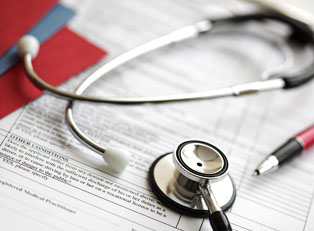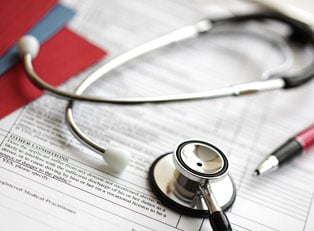When a person has a stroke, the blood that is supplied to a portion of the brain is severely reduced or interrupted and deprives the brain tissue of oxygen. Within minutes of this happening the brain cells start to die. A stroke is classified as a medical emergency and prompt and early treatment is crucial when it occurs to prevent potential complications, brain damage and even death. There are two primary types of strokes:
- Ischemic - An ischemic stroke happens when the blood supply to a part of the brain is reduced and leads to a dysfunction in brain tissue.
- Hemorrhagic - A hemorrhagic stroke occurs when a blood vessel bursts or leaks
Stroke is the leading cause of disability in Europe and the U.S. and the 2nd leading cause of death in the world. Some risk factors include high blood pressure (hypertension), high cholesterol, artrial fibrillation, old age, a previous stroke, cigarette smoking and diabetes. A silent stroke gives no outward symptoms and is where a patient is usually unaware that they have even suffered a stroke. This type of stroke may not give outwardly symptoms but can still cause brain damage and can place a patient at an increased risk for both a major stroke and a transient ischemic attack or "mini stroke" occurring in the future.
Stroke Symptoms
If you or anyone you know experience some of the signs and symptoms of a stroke, medical attention should be sought immediately. The following are some symptoms of a stroke:
- Difficulty walking - One symptom a person may have when they are suffering a stroke is that they may stumble, experience dizziness, or have some degree of loss of coordination or balance when they attempt to walk.
- Difficulty speaking - if you have a stroke, you may experience some confusion. Your voice may slur or you may find it hard to speak the right words to explain what is happening to you.
- Numbness or paralysis on one side of the face or body - A person may experience sudden numbness, paralysis, or weakness on one side of the body when they suffer a stroke. If you experience on of these symptoms, try lifting both your hands over your head. If one of your arms falls, you may be experiencing a stroke. Individuals may also have one side of their mouth droop when they have a stroke.
- Intense Headache - You may experience a sudden overwhelmingly strong headache that occurs out of the blue followed by altered consciousness, dizziness, or vomiting when you are having a stroke.
Stroke Treatment
The type of emergency treatment received during a stroke episode depends on whether a person is having a hemorrhagic stroke or an ischemic stroke. When a person is having a hemorrhagic stroke emergency treatment will focus on reducing pressure to the brain and controlling bleeding. Surgery is also used to control future stroke risk. Treatment options include:
- Emergency treatment - Place individuals on antiplatelet drugs or warfarin to prevent blood clots may be given transfusions of blood products or drugs to counteract their effects. Once bleeding stops, bed rest and further medical care is prescribed
- Surgery to repair blood vessels - abnormal blood vessels related to hemorrhagic strokes can be repaired through surgery such as aneurysm clipping, aneurysm embolization (coiling), and surgical AVM removal.
When a person has an ischemic stroke, physicians focus on trying to quickly restore the flow of blood to the brain. A patient must start clot-bursting drug therapy within 4.5 hours to improve chances of survival and lessen stroke complications. The following are some treatments for an ischemic stroke:
- Aspirin - This is the most immediate and best-proven treatment following an ischemic stroke in order to reduce chances of another stroke occurring.
- Medications - blood thinning drugs Coumadin (warfarin), Plavix (clopidogrel), and heparin may be given; however, these are not given as much as aspirin in emergency cases.
- TPA (Intravenous injection of tissue plasminogen activator) - usually given through the vein in the arm and helps some people recover more fully and can only be given within the 4.5 window of a stroke occurring.



